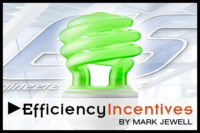
FIGURE 1. Energy efficiency budgets are on the rise in all regions of the U.S. as well as Canada.
Fortunately, budgets are still rising!
A slowing economy may temporarily depress U.S. electricity demand, but that doesn’t make it any easier for utilities as they try to figure out how to satisfy their customers’ needs five and ten years from now. With the capital markets in disarray and the twin wild cards of carbon taxes and cap-and-trade on the horizon, adding new generation or transmission capacity is even less attractive today than when the economy began to wind down. There’s no way around it: conservation and efficiency need to be “first in the loading order” whenever utilities think about meeting their customers’ future energy needs.

FIGURE 2. More than a dozen states have per capita efficiency budgets that exceed the mean.
In many states, regulators are requiring that utilities ratchet up their efficiency initiatives. Some are even starting to change the metrics used to gauge whether utilities are making a big enough commitment to their demand-side programs. For example, spending a certain percentage of revenues on efficiency programs may no longer be good enough. A utility may have to prove that a certain percentage of its load growth has been offset by efficiency programs. The combination of rising expectations for efficiency and the possibility of new program effectiveness metrics have many program managers scrambling. And while some regulators offer bonuses to utilities that exceed savings expectations, those who fall short may face onerous penalties.
The good news is that many regulators across the country are coming to recognize the benefits of decoupling utility revenues from profits - or at least providing shareholder incentives to support efficiency initiatives. Aligning the goals of utility shareholders with those of ratepayers helps motivate utilities to pursue demand-side as well as supply-side initiatives. Bottom line: it should be at least as profitable for a utility to save energy as it is to deliver more of it.
Regional Rebate Roundup
This year’s Market Transformation Symposium hosted in late March by the American Council for an Energy-Efficient Economy (ACEEE) and the CEE in Washington, DC featured a Regional Roundup session chock full of announcements of increased rebate funding levels in both the US and Canada. It also highlighted some bold new directions in program design.As Figures 1 through 7 illustrate, CEE reported significant increases in 2008 efficiency budgets throughout the U.S., including the New England, Mid-Atlantic, Southeast, South Central, Midwest, and West regions of the country. While the West showed the highest total budget at over $1.8 billion in 2008, the Midwest clocked the greatest percentage increase year-on-year: $544 million in 2008 vs. $354 million the prior year, an increase of more than 50%. Canadian efficiency budgets totaled $768 million in 2008, 30% higher than the $582 million total seen there in 2007.
Efficiency budgets were also higher in 2008 when measured on a per capita basis. The mean per capita budget was $12.39 in 2008, up from $10.79 in 2007. Figure 2 illustrates some of the highest ranking states in terms of efficiency budgets per capita, and Figure 3 lists 18 areas where efficiency budgets per capita are expected to increase in 2009.

Figure
3. Increases can be seen in both the number and
dollar values of incentives being budgeted.
Something Old and Something New ...
As these data suggest, total efficiency budgets continue to rise. That said, there tends to be considerable diversity in both program design and spending at the individual utility level - particularly when comparing utilities that have had programs for decades with ones that are just starting to offer incentives.It is not uncommon, for example, to see newly minted incentive programs limiting themselves to simple prescriptive lighting and HVAC measures - programs that have been offered by their more experienced brethren for decades. Program managers in these new territories offer two reasons for keeping it simple: 1) prescriptive rebates for compact fluorescent lamps and T8 retrofits, for example, are not only easier to administer but also involve less risk of missing projected savings targets than custom or segment-specific offerings; and, 2) in a utility jurisdiction that has never offered rebates before, there is plenty of pent-up demand for even the simplest of offerings, ensuring that programs will be fully subscribed.
At the other end of the spectrum are utilities that have years and years of experience offering incentives. They now have program development and management capabilities to accommodate more innovative offerings. In the Northwest, for example, utilities have begun focusing on ductless heat pumps, home electronics, green motors, and the “80 PLUS” computer initiative, which targets the efficiency of desktop computers and servers. In California, utilities have started targeting the actual performance of residential and commercial HVAC. In the Midwest and Southwest, some programs are offering planning and analysis tools by business segment, and experimenting with pilots involving behavior change among their residential customers. In the Northeast, programs are being developed to target zero energy homes, data centers, wastewater treatment, LEED® standards, advanced buildings, and on-bill financing.
As more and more utilities get comfortable offering advanced incentive programs, customers across the country will see a broader spectrum of approaches to keeping conservation and efficiency at the top of the loading order.ES




